When considering adding a turtle to your family, it’s essential to understand the different types of pet turtles and their unique care needs. If you’re a beginner or an experienced reptile enthusiast, selecting the suitable turtle species is crucial for ensuring a happy and healthy pet.
1. Red-Eared Slider (Trachemys scripta elegans)
The Red-Eared Slider is one of the most popular pet turtles due to its attractive appearance and manageable care requirements. These turtles are easily recognizable by the red stripes near their ears.
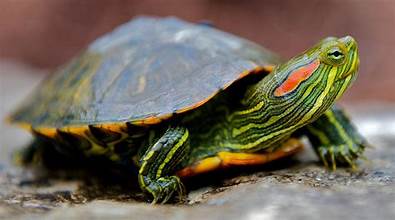
Habitat Needs:
Red-eared sliders require a sizeable aquatic tank with a basking area. UVB lighting is crucial for their health.
Diet:
Their diet includes aquatic plants, commercial turtle pellets, insects, and small fish.
Lifespan:
These turtles will live up to 30 years with proper care, making a long-term commitment.
Suitable for:
Beginners and intermediate keepers.
2. Eastern Box Turtle (Terrapene Carolina Carolina)
The Eastern Box Turtle is known for its domed shell and vivid markings. It is more land-based than aquatic and requires a well-structured terrestrial habitat.
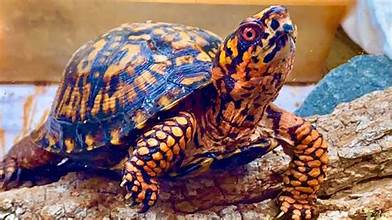
Habitat Needs:
A large enclosure with a substrate for digging and plenty of hiding spots. They thrive in humid environments.
Diet:
Eastern Box Turtles are omnivores, enjoying a varied diet of fruits, vegetables, insects, and occasionally small mammals.
Lifespan:
They are known for their long lifespans, often exceeding 50 years.
Suitable for:
More experienced turtle keepers due to their specific habitat and dietary needs.
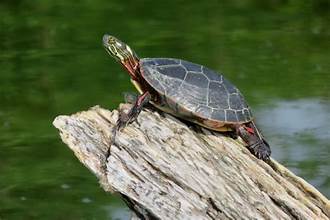
3. Painted Turtle (Chrysemys picta)
Painted Turtles are tiny, colorful turtles with smooth, flat shells. They are an excellent choice for an active, attractive pet.
Habitat Needs:
A well-maintained aquatic setup with UVB lighting and a basking area. Water quality is vital to their health.
Diet:
They are omnivores whose diet comprises aquatic vegetation, insects, and commercial turtle food.
Lifespan:
Painted Turtles have a life span of up to 25 years in captivity.
Suitable for:
Beginners and intermediate keepers.
4. Russian Tortoise (Testudo horsfieldii)
While not a turtle, the Russian Tortoise is a popular choice for those interested in a land-dwelling reptile. These small tortoises are hardy and have unique personalities.
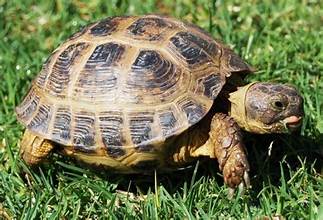
Habitat Needs:
A large, dry enclosure with a deep substrate for burrowing also requires a UVB light source.
Diet:
Russian Tortoises are herbivores, primarily feeding on leafy greens, vegetables, and occasional fruits.
Lifespan:
They can live up to 40 years, making them a pet for the long-term commitment.
Suitable for:
Intermediate and experienced keepers due to their specific environmental needs.
5. Map Turtle (Graptemys spp.)
Map Turtles are known for the intricate map-like patterns on their shells. These relatively shy turtles can be a rewarding pet for the dedicated keeper.
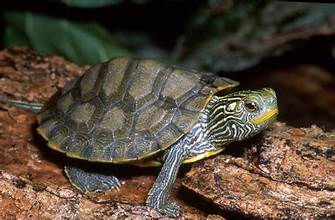
Habitat Needs:
A spacious aquatic tank with clean water, UVB lighting, and ample basking spots.
Diet:
Their diet is made of insects, crustaceans, and aquatic plants, and they may require a more varied diet than other turtles.
Lifespan:
Map Turtles can live between 15-25 years in captivity.
Suitable for:
Intermediate keepers due to their specific dietary and habitat needs.
6. Musk Turtle (Sternotherus odoratus)
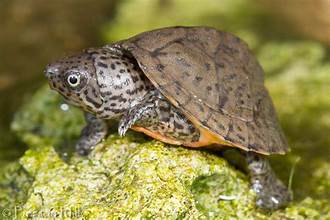
Musk Turtles, or Stinkpots, are tiny, semi-aquatic turtles known for their musky odor when threatened. Despite this, they are popular due to their small size and ease of care.
Habitat Needs:
A smaller aquatic setup with shallow water, UVB lighting, and a basking area.
Diet:
They primarily eat aquatic invertebrates, small fish, and commercial turtle pellets.
Lifespan:
Musk Turtles can live up to 20-30 years.
Suitable for:
Beginners, due to their relatively simple care requirements
Conclusion
Choosing the correct type of pet turtle is essential for ensuring a positive experience for you and your new reptile friend. Each species has unique care needs, so it’s vital to research and prepare for the specific turtle you plan to adopt. Whether you’re a beginner or an experienced keeper, understanding the habitat, diet, and long-term commitment required will help you provide the best care for your pet turtle.


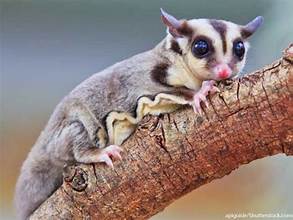
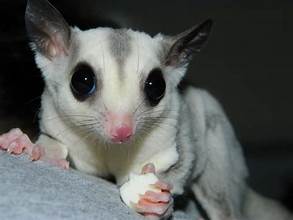

Pingback: Turtles’ Unique Behaviors and Personalities: Insights into Their World - Positvley Pets